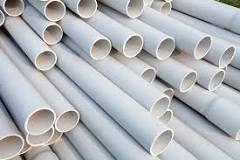Nov . 30, 2024 19:59 Back to list
Exploring Various Types and Sizes of PVC Pipes for Different Applications
Understanding PVC Pipe Types and Sizes
Polyvinyl chloride (PVC) pipes are one of the most commonly used types of piping in construction and plumbing. Known for their durability, resistance to corrosion, and lightweight nature, PVC pipes are favored for various applications, including residential, commercial, and industrial projects. This article delves into the different types and sizes of PVC pipes, highlighting their characteristics and uses.
Types of PVC Pipes
1. Schedule 40 PVC Pipe This is the most common type of PVC pipe used for residential plumbing and drain-waste-vent systems. Schedule 40 pipes have thinner walls compared to Schedule 80 pipes, making them lighter and easier to handle. They are sufficient for most applications where water pressure is not excessively high.
2. Schedule 80 PVC Pipe Designed for higher pressure applications, Schedule 80 pipes have thicker walls than Schedule 40. They are often used in industrial settings and for chemical transportation. While they can be used in conventional plumbing applications, their robustness usually makes them overkill for regular household use.
3. CPVC Pipe (Chlorinated Polyvinyl Chloride) While CPVC is still a PVC product, it is engineered to handle higher temperatures, making it suitable for hot water applications. CPSV is often used in hot water distribution systems and is compatible with all common forms of plumbing connections.
4. PVC Foam Core Pipe This type of pipe features a foam core that makes it lighter while maintaining rigidity. It is often used in plumbing applications where weight is a consideration, or in systems where the pressure is not extreme. Foam core pipes can also be advantageous in reducing transport costs.
5. PVC Duct Pipe Specifically designed for venting and air management systems, PVC duct pipes are used in HVAC installations. They have a smooth interior surface that minimizes resistance and allows for efficient airflow.
pvc pipe types and sizes products

6. PVC Electrical Conduit This type of PVC piping is used to protect electrical wiring from damage. Available in both rigid and flexible forms, PVC conduits can be used for indoor and outdoor applications, providing a lightweight solution that is resistant to water and other environmental factors.
Sizes of PVC Pipes
PVC pipes come in various diameters and lengths, accommodating a wide range of applications. Common diameters for residential use include
- ½ inch Often used for drain lines and in-sink plumbing fixtures. - ¾ inch Frequently used for outdoor spigots and small plumbing fixtures. - 1 inch Commonly used for main water supply lines in residential homes. - 2 inches and above For larger water flow applications, including main drains and larger plumbing fixtures.
PVC pipes are typically available in lengths of 10 and 20 feet, but many suppliers offer custom lengths too. The size of the pipe required will depend on the application, the amount of water being transported, and local building codes.
Conclusion
PVC pipes are a versatile option for contractors and homeowners alike, providing benefits that include resistance to corrosion, ease of installation, and a range of applications. Understanding the different types and sizes available is crucial for choosing the right PVC pipe for your specific needs. Whether you are managing a DIY plumbing project or overseeing a large construction site, selecting the appropriate PVC pipe will ensure effectiveness and longevity in your plumbing systems. With various options at your disposal, PVC pipes stand out as an efficient and cost-effective choice for any project.
-
High-Quality PVC Borehole Pipes Durable & Versatile Pipe Solutions
NewsJul.08,2025
-
High-Quality PVC Perforated Pipes for Efficient Drainage Leading Manufacturers & Factories
NewsJul.08,2025
-
High-Quality PVC Borehole Pipes Durable Pipe Solutions by Leading Manufacturer
NewsJul.08,2025
-
High-Quality PVC Borehole Pipes Reliable PVC Pipe Manufacturer Solutions
NewsJul.07,2025
-
High-Quality UPVC Drain Pipes Durable HDPE & Drain Pipe Solutions
NewsJul.07,2025
-
High-Quality Conduit Pipes & HDPE Conduit Fittings Manufacturer Reliable Factory Supply
NewsJul.06,2025

